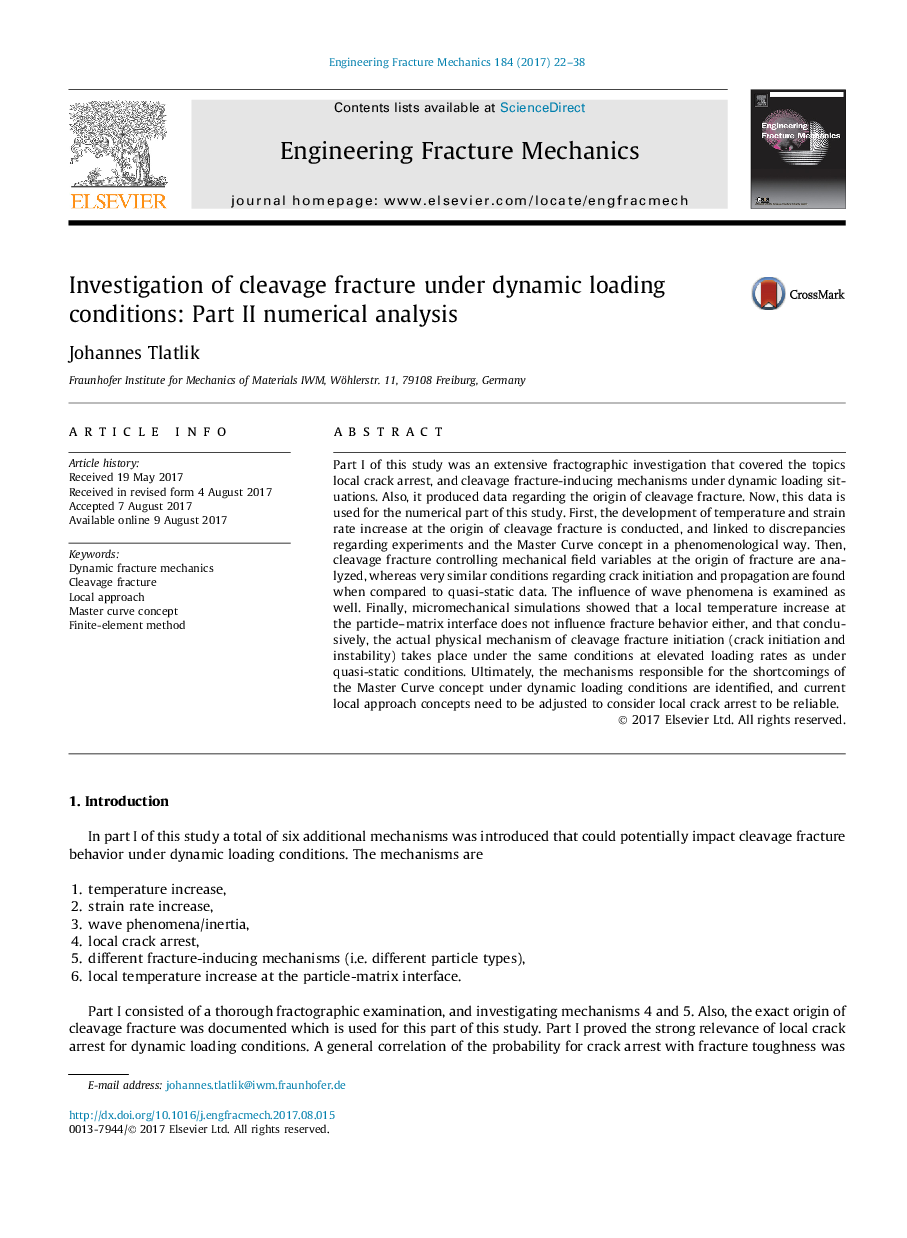| Article ID | Journal | Published Year | Pages | File Type |
|---|---|---|---|---|
| 5013764 | Engineering Fracture Mechanics | 2017 | 17 Pages |
Abstract
Part I of this study was an extensive fractographic investigation that covered the topics local crack arrest, and cleavage fracture-inducing mechanisms under dynamic loading situations. Also, it produced data regarding the origin of cleavage fracture. Now, this data is used for the numerical part of this study. First, the development of temperature and strain rate increase at the origin of cleavage fracture is conducted, and linked to discrepancies regarding experiments and the Master Curve concept in a phenomenological way. Then, cleavage fracture controlling mechanical field variables at the origin of fracture are analyzed, whereas very similar conditions regarding crack initiation and propagation are found when compared to quasi-static data. The influence of wave phenomena is examined as well. Finally, micromechanical simulations showed that a local temperature increase at the particle-matrix interface does not influence fracture behavior either, and that conclusively, the actual physical mechanism of cleavage fracture initiation (crack initiation and instability) takes place under the same conditions at elevated loading rates as under quasi-static conditions. Ultimately, the mechanisms responsible for the shortcomings of the Master Curve concept under dynamic loading conditions are identified, and current local approach concepts need to be adjusted to consider local crack arrest to be reliable.
Related Topics
Physical Sciences and Engineering
Engineering
Mechanical Engineering
Authors
Johannes Tlatlik,
